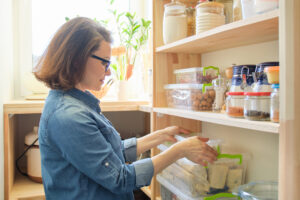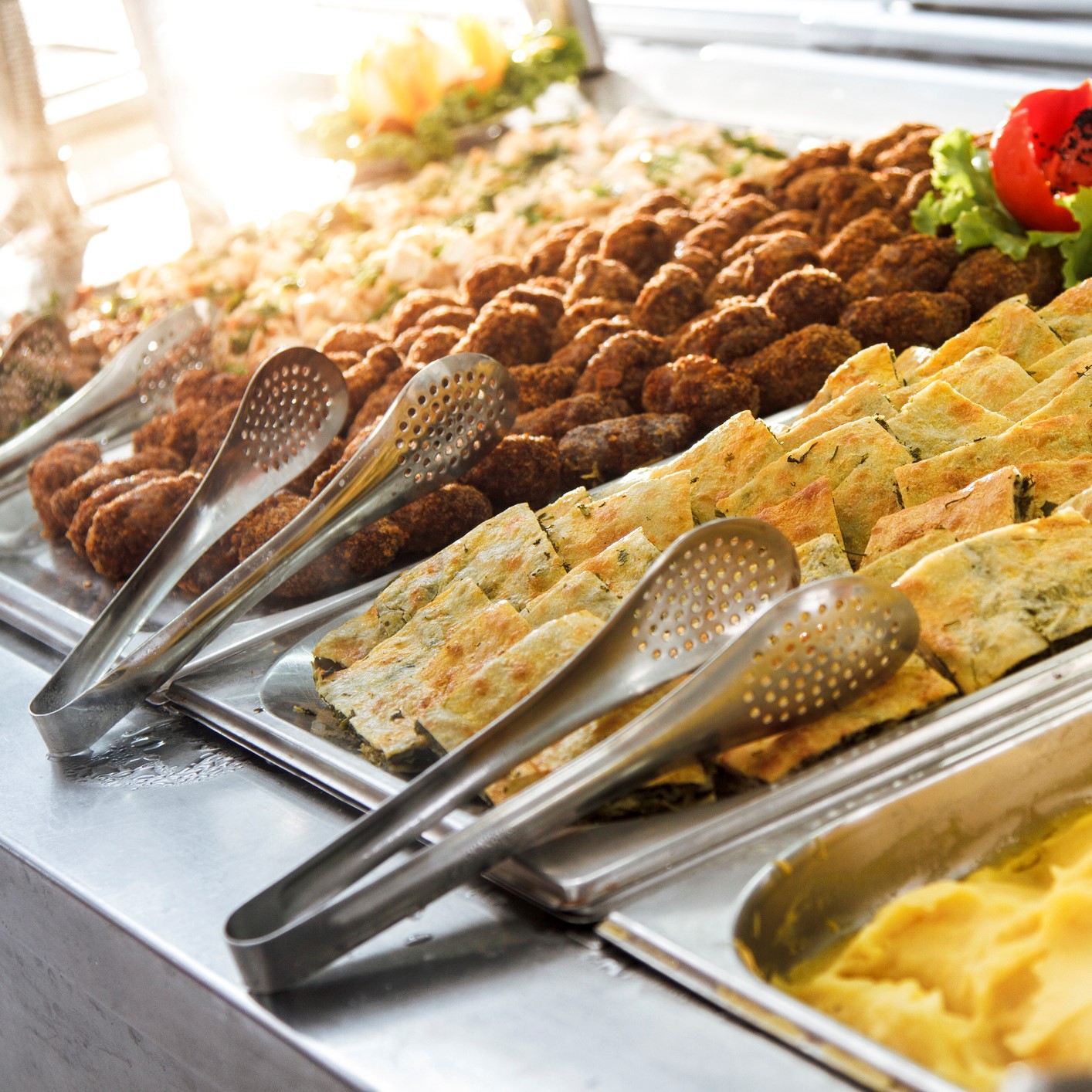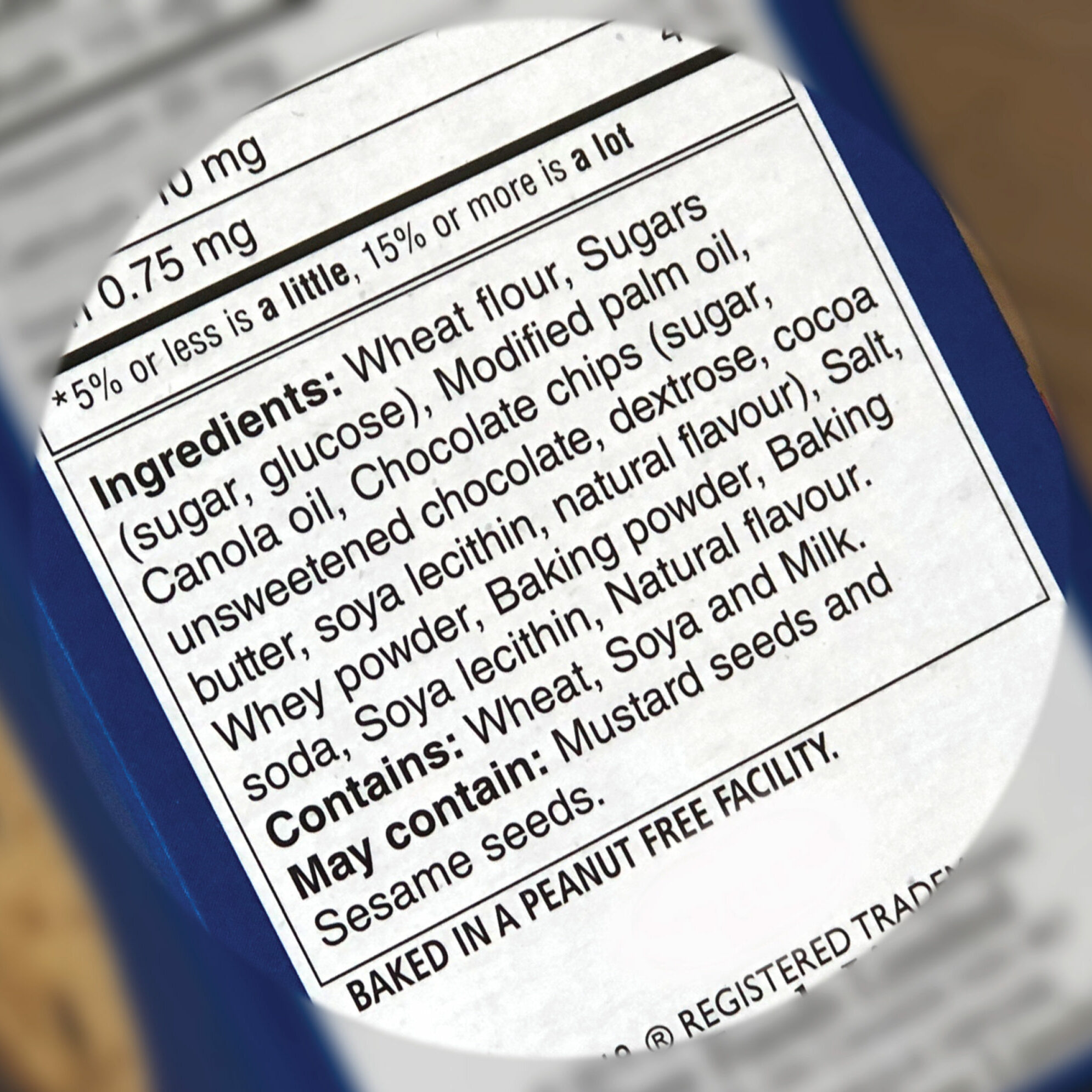
In this series, we ask dietitians across Canada to answer your questions on nutrition and dietary support. We recently spoke with Amy Chow, a registered dietitian based in Langley City, BC.
This month, Amy answers a question on safe and healthy items for your kitchen pantry.
What are some ideas for stocking an allergy-friendly pantry?
Part of living with a food allergy includes revamping your kitchen pantry as you are learning new ways to cook and experiment with safe foods and substitutes. Here are my top tips for stocking an allergy-friendly pantry to help you safely prepare nutritious and delicious meals and snacks!
Get organized before stocking your pantry

Go through your pantry to assess what you already have on hand and clear out any unsafe items that contain or may contain your food allergen(s), if you choose not to have them in your home. Your personal allergy-friendly pantry will form over time as you begin to cook regularly and develop favorite recipes or flavors. Choose one or two core items from each category (e.g. grains, canned goods, baking supplies) that are suitable to your specific allergy as a start to build up your pantry over time.
You may also want to consider the storage of your pantry items. If your household members still consume your food allergen, be sure to separate these items from your allergy-friendly ones to minimize accidental exposure and cross-contamination.
Stock up on allergy-friendly staples
These pantry staples are basic, versatile ingredients that are the foundations to your everyday allergy-friendly dishes. They make up a significant portion of your diet and provide energy and macronutrients, such as carbohydrates, protein, and fats, that are essential for general health and well-being.

- Rice and rice-based products (i.e. noodle, wrap, cracker) offer many possibilities. Rice and rice noodles can be a delicious alternative to pasta. They can take less time to cook and still give a nice chewy texture to your meal. There are so many varieties of rice to try – white, brown, red, wild, jasmine, and more. Plus, rice wraps can substitute for tortillas.
- Quinoa is a whole grain that provides even more protein, fibre and iron than rice or oats. Quinoa can be cooked as rice or porridge, and made into plant-based burger patties, salads and more. To avoid the bitter taste that can arise from the outer coating of quinoa, rinse your uncooked quinoa in cold running water for a minute or so until the water runs clear.
- Hemp hearts are a healthy addition to the diet. They are a great source of omega 3 fatty acids, protein, fibre and iron. The best part? You can add hemp hearts to anything! We really enjoy adding hemp hearts to our cereal, oatmeal, salads, and rice.
- Canned beans and lentils are convenient options; packaged dried lentils are also an easy-to-cook option. Keep in mind that it is not safe to obtain beans, lentils, or anything else from bulk bins when you have a food allergy. There is a risk of cross-contamination due to people using the same scoops in multiple bins.
- Non-dairy milk/milk alternatives are helpful to have on hand for the times you need milk in your cereal, coffee or tea, or in recipes. There are so many choices on the market, choose ones that are suitable for your allergy and are fortified with calcium and vitamin D.
Substitute with allergy-friendly baking supplies
Getting ready for baking? Here are some of the more common substitutions for recipes involving baking.

- Cooking oils can easily substitute for butter in baked goods. If you need to avoid peanut or tree nut-based oils, choose olive, canola or avocado oil for a delicious and healthy switch. These oils are heart-healthy and can be used in many different ways.
- Coconut oil is solid at room temperature which makes it a better butter substitute in baked goods. For example, crumbles and pastries require a solidified fat to create that flaky, melt-in-your-mouth texture. Some people allergic to tree nuts have also reacted to coconut, therefore, consult your allergist before trying coconut-containing products.
- Canned chickpeas contain a liquid called “aquafaba.” It may seem strange to use the liquid from a can of beans in your baking but it’s truly magical how fluffy this liquid gets when you whip it! Once whipped, it can take the place of whipped egg whites in a recipe.
- Chia seeds and flax seeds form a gel when they are mixed with liquid. You can use chia and/or flax seeds to substitute “egg” in baking. These seeds are also a great source of omega 3 and fiber to help keep your heart and gut happy.
- Applesauce is a delicious snack on its own, and can also make a fantastic butter and egg substitute. Although it doesn’t impart the same buttery flavor, it’ll definitely still give you a moist cake or muffin.
- Oats are a terrific ingredient to have on hand. Aside from oatmeal, they can be used in place of wheat flour to make pancakes, granola bars, cakes, bread and cookies! Rolled oats are the most versatile option and can be used in most recipes.
The key to healthy eating is planning ahead and having a well-stocked pantry. When you have allergy-friendly ingredients on hand, you will be able to whip up healthy and safe meals/snacks easily.
Adapt this list to your own food allergen(s) and be sure to always read ingredient lists carefully and do the “triple check”, by reading labels: 1. At the store before buying a product, 2. When you get home and put it away, and 3. Before you serve it.



